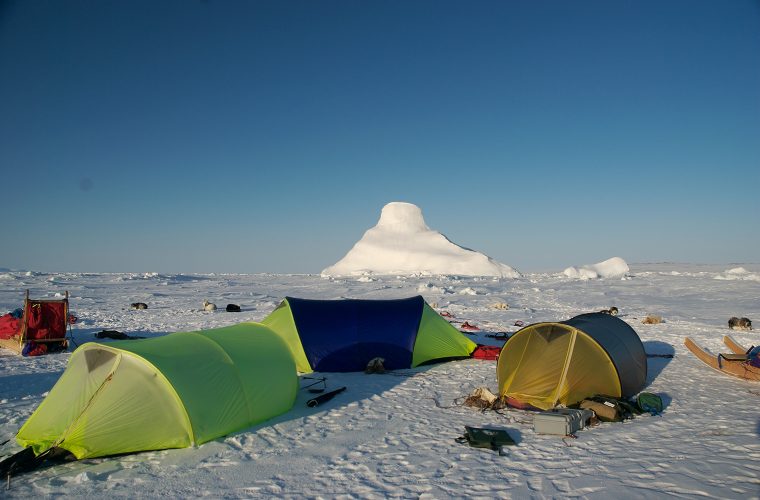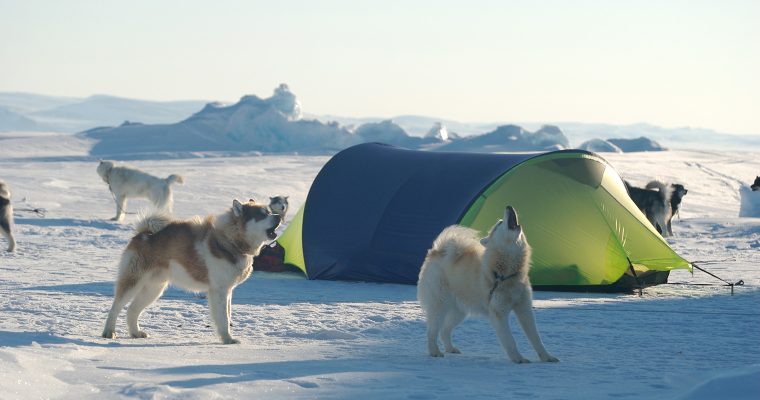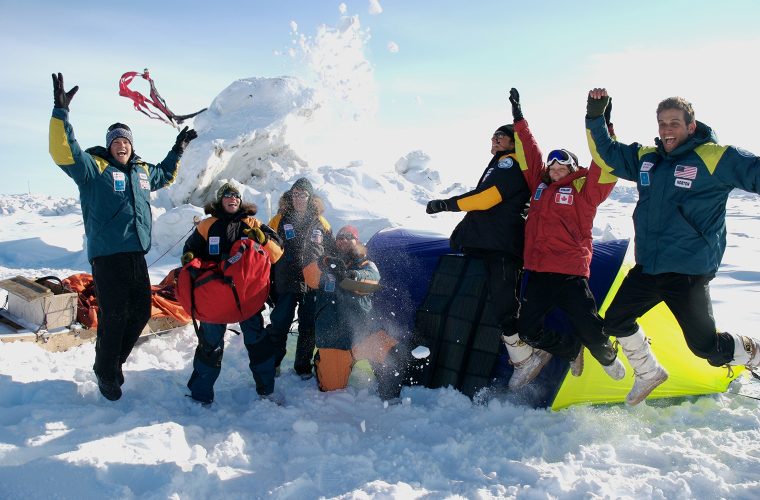In Will Steger's own words
Warmlite Tents
In the 1970s I did my first Arctic dogsled expeditions using an off-the-shelf name-brand tent. This tent was popular with Himalayan climbers so I thought I made the right selection. I found out otherwise during my first Barren Lands winter storm.
Erecting the dome tent in the dark was downright dangerous. The elastic in many poles were limp and impossible to adjust. My partner and I had to put the poles inside our clothing and dance around in the 40-below, 60-mph wind to warm them up so that they would function. Then there were so many tie-downs, it was almost impossible to stake out on the windswept ground. Finally, we got our shelter up in the blackness (our headlight batteries had frozen) and settled down for what would be a harrowing three-day experience. We didn’t have snow flaps and as a result, the snow compacted concrete-hard between the fly and main body, which started to rip the inner fabric. We spent the next 72 hours in the frigid tent in candlelight taking shifts to sew up the rips. If the tent had blown apart I am not sure we would have survived.
The storm lifted on the fourth day and that night we limped back to the Inuit village of Baker Lake to assess our options. The tent was destroyed and there was no way we could get a replacement. The Inuit hunters taught us how to build igloos, but this had limited value since we had planned to travel a full year and a half.
The year before in my research for Arctic gear I had come upon a catalog that featured what was called a Jack Stephenson Warmlite tent. These tents were supposed to hold up in 100-mph winds. At that time I called the number on the catalog and talked to Jack. We became good friends, and he was inspired by my plans to dogsled 6000 miles in the Arctic. He had never sponsored anything, but he recognized that I was on a shoestring budget so he came to my rescue by giving me a three-person tent and a down jacket that he had made (which I was wearing in the storm). The Stephenson tent was our only option to salvage the expedition. Taking the ultra-lightweight tent was an act of faith because we didn’t know if it would hold up to the storms.
The Inuit hunters tried to persuade us to wait another six weeks for the weather to lift since no one had ever crossed the Barrens in the winter. That was not an option since our plan was to summer over on Ellesmere Island some 2000 miles to the north. The next month we hit super-cold, force-12 storms that I didn’t believe existed in the northern hemisphere. At first, it took some adjustment getting used to the tent. We were a little skeptical, but its function weaned us from foe to friend. It was simple to set up even in the strongest winds. Its integral walls provided insulation. And most important, we felt secure in the worst storms.
We ended up living in it for over 600 days and it easily survived all the varied conditions that we encountered, including an Eskimo dog that chewed his way through the front door to steal some food. Since 1982 the Stephenson Warmlite has been my tent of choice on my polar expeditions.
The Warmlite tent can survive the worst storms on the planet. I know because I have lived to tell about them.
In my Warmlite tent, I sleep peacefully in the worst Arctic storms.
The Warmlite is a custom tent, unlike any retail tent. It is super lightweight and packs down to a small volume. It is the only tent out there that comes with a detailed user manual. Like any fine-tuned instrument, it requires common sense and care.
Happy tenting,
Will




